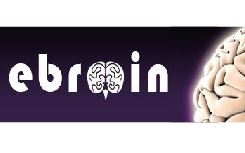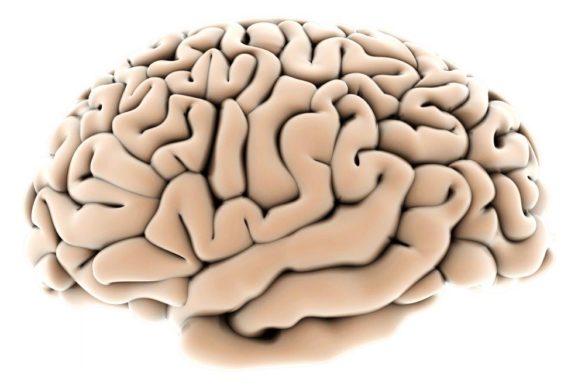by Giovanni Piccirillo, A. Tessitore, A. Giordano, M. Cirillo, M.R. Monsurro’, G. Tedeschi
A 58-year-old woman presented with a one-year history of painful paresthesia in the lower and upper limbs and progressive disturbance of gait. In 1960 she had a diagnosis of “Arnold-Chiari malformation type I associated with Syringomyelia”. Three months before our observation she had surgical management for tethered cord but did not experience any significant clinical benefit. Neurological examination at admission showed ataxic and spastic gait with Babinski sign bilaterally, deep sensory loss from the seventh cost downwards. Full blood count revealed hypochromic macrocytic anaemia (haemoglobin 10g/dL, mean corpuscular volume 108.4fL. serum B12 level was less than 60pg/mL – normal range: 300-1000pg/mL). Spinal MRI revealed a T2 hyperintense lesion in the posterior and lateral columns of cervical and thoracic spinal cord (Figures A-B-C). Oesophagogastroduodenoscopy showed: cardial incontinence, hyperaemic and hypotrophic gastropathy. Other causes of macrocytic anaemia were excluded: i.e. celiac disease, hypothyroidsm, liver disease, pancreatic disease and neoplasia. A diagnosis of subacute combined degeneration was considered and the patient started pharmacological treatment with high-dose of B12 vitamin (2000µg /die intramuscular) with clinical motor and sensory improvement during the following weeks. A follow up MRI (Figures D-E-F) revealed a subtotal regression of the T2 hyperintense signal in the posterior and lateral columns limited to the dorsal medullary tract.
Take home message: Subacute combined degeneration of the spinal cord is a recognized complication of vitamin B12 deficiency. Such myelopathy is reversible, as shown in our case; therefore a prompt recognition of this disorder can greatly ameliorate the patient’s prognosis.
Video 1: Gait before treatment
Video 2: Gait after treatment
References:
1. Scalabrino G. Cobalamin (vitamin B12) in subacute combined degeneration and beyond: traditional interpretations and novel theories. Exp Neurol. 2005; 192: 463-79.
2. Andrès E. Fothergill H., Mecili M. Efficacy of oral cobalamin (vitamin B12) therapy. Expert Opin Pharmacother. 2010;11: 249-56.
Giovanni Piccirillo and colleagues are working at the Department of Neurological Sciences at the Second University of Naples in Italy.
Comment by David B. Vodušek
I agree with the authors that vitamin B12 deficiency should be high on the list of possible suspects in patients with any symptoms and signs that might be attributed to B12 hypovitaminosis, even though an alternative diagnosis seems to suggest itself.
Did – in the patient reported by Piccirillo et al. – an alternative diagnosis suggest itself?
The authors report a case of a 58-year-old woman who had received (in the past) a diagnosis of Arnold Chiari malformation type 1 (CM I) associated with syringomyelia. When this patient presented with new symptoms at the age of 58, these were attributed by a tethered cord syndrome. It seems that the old diagnosis (i.e. CM I) suggested to the (first) physician the diagnosis of tethered cord syndrome since it had been reported in the literature that both malformations may co-exist. (This explanation of how the patient got this rare diagnosis at her presentation with new neurological symptoms at the age of 58 is of course tentative. We do not know what exactly the symptoms and the MRI findings were, and on what grounds the first clinician reached the diagnosis of tethered cord syndrome). Anyhow this diagnosis was formulated and surgery was performed.
The present authors report the persistence of patient’s symptoms after surgery. The (persisting) symptoms were described as ataxic and spastic gait with loss of deep sensitivity. The patient’s symptoms significantly improved after substitution treatment as is nicely demonstrated on the video.
Tethered cord syndrome may present – rarely – in an adult. Urinary and anorectal symptoms are often reported first. In our experience prominent gait disturbances without urinary symptoms would be rather atypical of a tethered cord syndrome.
There are anecdotal reports that Arnold Chiari malformation type 1 may be associated with tethered cord syndrome. It has recently been reported that such an association is indeed very rare (Valentini et al 2011).
What about the connection of CM I and tethered cord?
It had been suggested that CM1 is not only associated with the tethered cord but even resulting from the same traction mechanism (even if the conus is located in normal position) (Abel et al 2006). However the position of the tonsils after a de-tethering surgical procedure (in those few patients who seemed to have the association) did not change, speaking against the connection between the tethering and the tonsilar descent (Valentini et al 2011).
To summarize: The first diagnosis (of tethered cord syndrome) in the patient described by Piccirillo et al. was formulated on data which we do not exactly know. The therapeutic consequence of the first diagnosis did not solve the patient’s symptoms. The diagnosis of B12 hypovitaminosis was then made and symptoms improved after therapy.
To strengthen the message of Piccirillo et al. we report a somewhat similar story of a misdiagnosed patient with B12 hypovitaminosis:
A 52-year-old woman, tetraplegic (Asia 1) for the last 8 years, presented with a 6-months history of painful paresthesia in the hands and some new loss of function of her hands. (The patient had good elbow flexion and some preservation of wrist and finger extension with good sensation in the first two fingers and some sensation in the third and fourth fingers).
The patient had initially been examined at another neurology department. A follow-up MRI of her cervical spine was performed. As no new abnormalities were seen in comparison with the previous MRI and no change on clinical examination – as compared to previous data – was found; her symptoms were declared to be due to anxiety and depression. An SSRI antidepressant was prescribed.
The patient did not start the antidepressant but sought a second opinion in my outpatient clinic.
The patient did have a history of depression after her accident and following tetraplegia. She also seemed to have no objectively recognisable new neurological deficit. Full blood count revealed hipochromic macrocytic anaemia. A B12 essay was ordered and the serum level of B12 was found to be 53pmol/L (142 – 725pmol/L).
On further questioning she admitted following a vegetarian / vegan diet. A course of B12 i.v. therapy was started and the patient was referred to a dietician.
The patient reported back by e-mail 3 months later that her symptoms were improving.
Readers’ comments are invited:
The videos of the patient before and after treatment show hand and finger movements during walking.
How would you describe them?
What is their nature?
References:
Valentini LG, Selvaggio G, Visintini S, Erbetta A, Scaioli V, Solero CL (2011) Tethered cord: natural history, surgical outcome and risk for Chiari malformation 1 (CM1). Neurol Sci 32 (Suppl 3):S353–S356
Abel TJ, Chowdhary A, Gabikian P, Ellenbogen RG, Avellino AM (2006) Acquired Chiari malformation associated with a fatty terminal filum. J Neurosurg 105(4):329–332
Professor David B. Vodušek is professor of neurology at the Medical Faculty, University of Ljubljana and Medical Director of the Division of Neurology at the University Medical Center Ljubljana, Slovenia.











2 comments
An interesting sign. I should list the possible explanations as 1) paraesthesia – making the patient’s fingers ‘restless’ with the discomfort. 2) mild hypocalcaemia – with the same presentation 3) Parkinsonian tremor – made more obvious by the activity of walking [tremor in PD disappears only when the affected limb is itself active].
patient’s hand and finger movement in this video is an useful sign that could be seen in position sensation disturbance (disorders of spinal cord posterior column function, as in B12 deficiency states). The patient could find out his/her fingers position by these movements, like the “piano playing sign”.